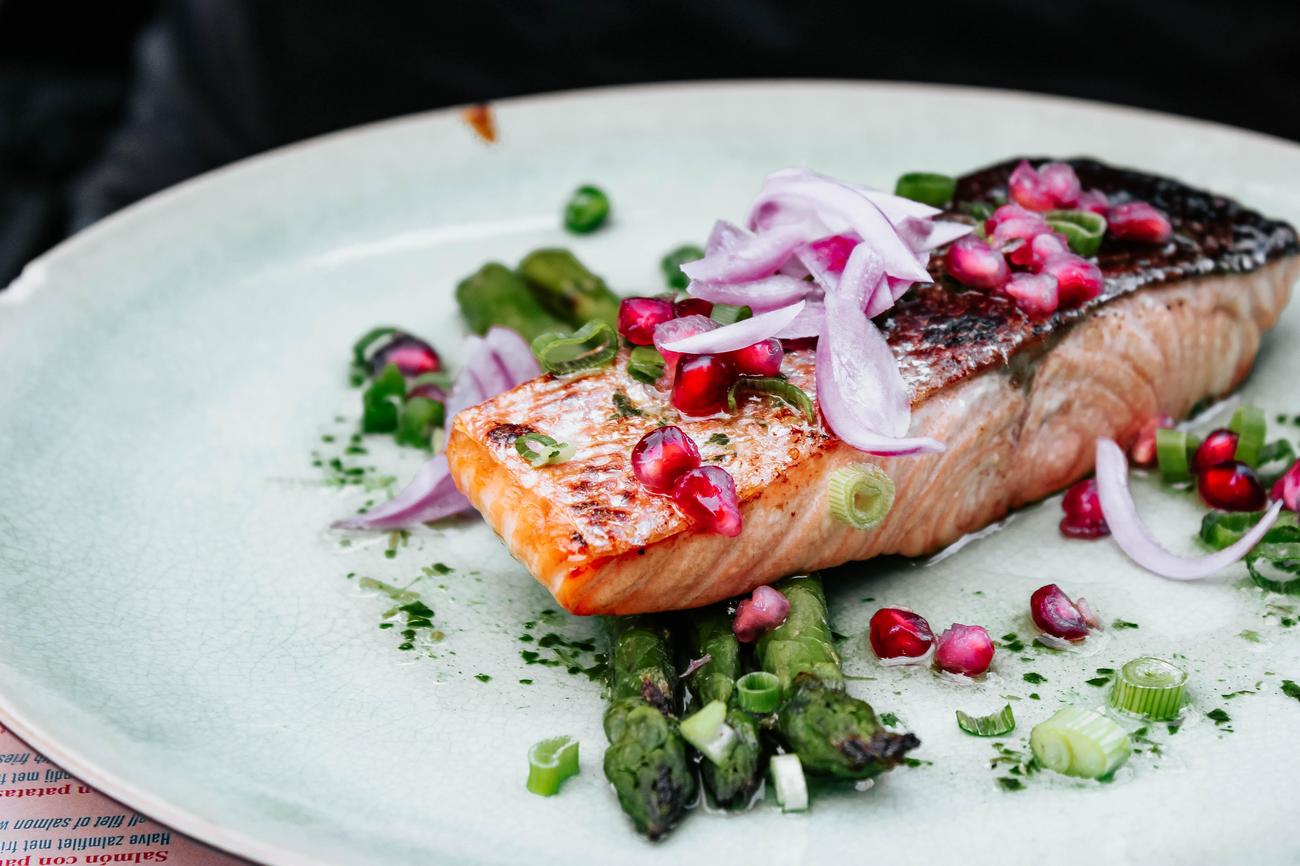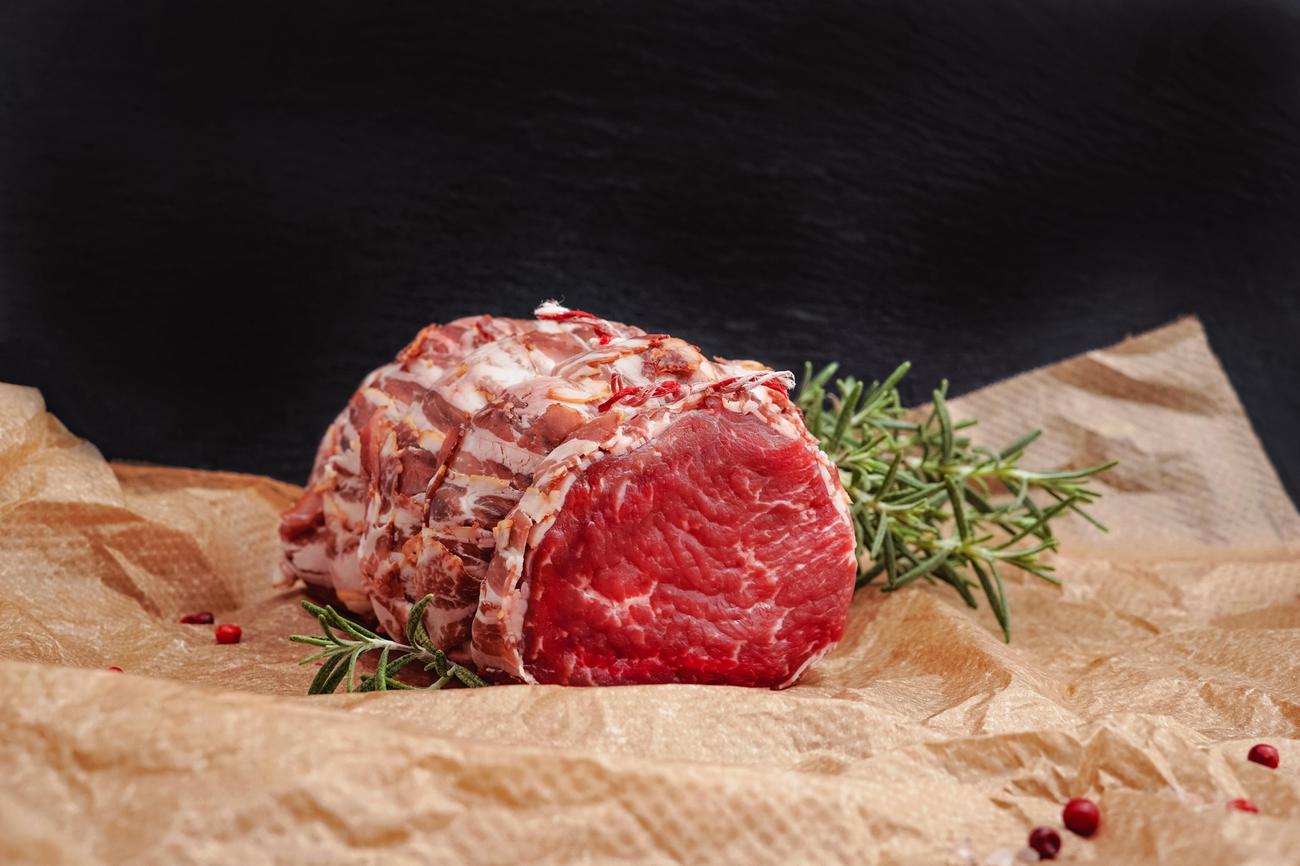Are you a steak lover looking to incorporate healthier choices into your diet? Look no further! In this article, we dive deep into the realm of steak nutrition, uncovering essential facts that will revolutionize the way you view this mouthwatering delicacy. From exploring different cuts of beef to dissecting the impact of cooking methods on nutrient profiles, we unveil evidence-based insights that will empower you to make informed dietary choices. So, whether you’re a nutrition-conscious carnivore or simply curious about the nutritional value of steak, join us on this journey as we unlock the secrets of a healthier steak diet.

Nutrition Facts About Steak
When it comes to a juicy and flavorful meal, few foods can rival a perfectly cooked steak. But what are the nutrition facts about steak that you should know? Let’s dig into the essential information about this delicious protein source and uncover how it can contribute to a healthier diet.
Types of Steak and Nutrient Profiles
First things first, let’s talk about the different types of steak. Steaks come in various cuts, and each one has its own unique nutrient profile. For instance, ribeye steak is well-marbled and packed with flavor, while a tenderloin steak is incredibly lean. The nutrition facts about steak can vary depending on the cut and cooking method used.
Protein Powerhouse
One of the standout features of steak is its high protein content. Protein is an essential nutrient that plays a crucial role in building and repairing tissues, supporting a healthy immune system, and regulating various bodily functions. A nutrition fact about steak is that it provides a substantial amount of protein, making it an excellent choice for individuals looking to meet their daily protein needs.
The Importance of Unprocessed Meats
When discussing the benefits of steak, it’s crucial to emphasize that unprocessed meats, like steak, are considered superior choices compared to processed meats. Processed meats often contain additives and high levels of sodium, which can have negative consequences on health. However, unprocessed meats provide essential nutrients without the added undesirable ingredients. By including steak in your diet, you’re opting for a more wholesome and nutritious protein source.
The Steak Grade
To ensure that you’re getting high-quality meat, it’s essential to understand the grading system used for beef. In the United States, the USDA grades beef quality as Prime, Choice, and Select. Prime grade meat has the highest level of marbling, making it exceptionally tender and flavorful. Choice grade is the most commonly available and strikes a good balance between flavor, tenderness, and price. Select grade, while leaner, may be slightly less tender but still offers a delicious steak experience.
Steak and Saturated Fats
When it comes to fats, it’s important to be mindful of your intake, especially saturated fats. The American Heart Association recommends limiting the consumption of saturated fats to about 13 grams per day. While steak does contain saturated fats, nutrition facts about steak reveal that choosing lean cuts and trimming any visible fat can help reduce saturated fat intake. By making these conscious choices, you can enjoy the health benefits of steak while keeping your dietary goals in check.
Nutrient Density and Health Benefits
Despite the attention given to its protein and fat content, nutrition facts about steak highlight that it is also a nutrient-dense food. Steak is an excellent source of essential vitamins and minerals, such as iron, zinc, and B-vitamins. These nutrients play vital roles in energy production, immune function, and maintaining overall health and wellbeing. By incorporating steak into a balanced diet, you can reap the benefits of these essential nutrients.
Cooking Methods and Nutritional Value
How you cook your steak can have a significant impact on its nutritional value. Grilling, broiling, or pan-searing your steak can help retain more nutrients compared to deep-frying or heavily breading it. Additionally, certain seasonings and marinades can enhance the flavor without adding excessive calories or sodium. Remember, moderation is key. While savoring a well-seasoned steak can be a delightful experience, it’s essential to strike a balance for optimal health.
Steak and Carbohydrates
When it comes to carbohydrates, steak is a near-zero source. This fact is particularly relevant for individuals following low-carbohydrate diets or those looking to manage their blood sugar levels. The glycemic index, a measure of how carbohydrates in food affect blood sugar levels, does not include beef as it is not a significant source of carbohydrates. Therefore, adding steak to your plate won’t cause any drastic fluctuations in your blood sugar levels.
Calories and Portion Control
While steak is undoubtedly a nutritious protein source, it’s essential to be mindful of portion sizes, especially if you’re watching your calorie intake. Nutrition facts about steak reveal that the calorie content can range from approximately 200-600 calories per serving, depending on the cut and portion size. So, pay attention to the recommended serving sizes and incorporate moderation into your steak-loving journey.
In conclusion, steak offers more than just a delicious eating experience. Its high protein content, essential nutrients, and potential health benefits make it a valuable addition to a balanced diet. By understanding the nutrition facts about steak, you can make informed decisions when selecting your cuts and cooking methods. So, go ahead and savor that perfectly cooked steak while nourishing your body with its nutritional goodness.
Key Takeaway:
– Steak is a protein powerhouse, providing essential amino acids for building and repairing tissues.
– Opt for unprocessed meats like steak to avoid unwanted additives and enjoy wholesome nutrition.
– The grading system ensures you choose high-quality meat that suits your taste and preference.
– Lean cuts, trimming visible fat, and moderate consumption can help manage saturated fat intake.
– Steak is not a significant source of carbohydrates, making it suitable for low-carbohydrate diets.
– Pay attention to portion sizes and cooking methods to maximize the nutritional value of steak.
Steak lovers, brace yourself for an absolute feast of knowledge! Prepare to discover fascinating facts about steak that will leave you craving for more. From sizzling sirloins to succulent ribeyes, we’ve curated a collection of intriguing tidbits that will make you appreciate your favorite cut even more. Dive into a world of culinary mastery, where the perfect sear and tender texture come together in a symphony of flavors. Don’t miss out on these facts about steak. Read more at facts about steak and elevate your appreciation for this culinary delight.
Nutrition Facts About Steak
When it comes to the nutritional value of steak, there is so much more to it than just its flavor and tenderness. Did you know that steak is a rich source of essential nutrients that your body needs? Dive into the world of steak nutrition facts and discover how this delicious cut of meat can contribute to a balanced diet.
First off, let’s explore the keyword “steak nutrition facts.” If you’re curious about the precise nutritional composition of steak, look no further. Click here to unveil the comprehensive breakdown of proteins, fats, vitamins, and minerals that make up this juicy delight. You’ll be amazed at the incredible nutritional profile hidden within each succulent bite.
Moving on to our next intriguing keyword, “nutritional information on steak.” If you’re seeking detailed information about the various nutrients found in steak, this link will satisfy your curiosity. Uncover the secrets behind the vitamins, minerals, and other beneficial components that make steak a valuable addition to your diet. Click here to discover the true power of steak’s nutritional benefits.
But wait, there’s more! Don’t miss out on the health benefits of steak, as our final keyword suggests. Clicking here will open your eyes to the multitude of advantages that steak can offer. From supporting muscle growth and repair to boosting iron levels and enhancing brain function, steak is truly a nutritional powerhouse. Dive into the realm of steak’s health benefits and start enjoying a more vibrant and robust life.
Now that you are armed with the knowledge about steak’s nutrition facts, its nutritional information, and its health benefits, you can make informed decisions about incorporating this protein-packed delicacy into your diet. Enjoy the experience of savoring a delicious and nutrient-dense steak while reaping the rewards it has to offer.
Remember to bookmark the links below for easy access whenever you need to refer back to this valuable information:
Embrace the power of steak and discover a whole new world of nutrition and well-being!
What’s Inside a Ribeye Steak – Debunking Misconceptions
[youtube v=”QL5QPHFeFQY”]
Introduction
Ribeye steak is a popular choice for many people on low-carb or carnivore diets due to its high fat content. However, there are several misconceptions about ribeye steak that need to be addressed. In this article, we will delve into the nutritional value of ribeye steak, debunking erroneous beliefs, and highlighting the facts. So, let’s get started!
A Closer Look at the Nutrition of Ribeye Steak
Ribeye steak is known for its delicious flavor and high fat content, which makes it a natural choice for those following low-carb or carnivore diets. However, it’s essential to understand the actual nutritional composition of ribeye steak so that you can make informed dietary choices.
Protein and Fat Content
Ribeye steak contains no carbohydrates, making it a suitable choice for individuals aiming to keep their carb intake low. In terms of macronutrients, ribeye steak consists of approximately 24% protein and a whopping 67% fat. This distribution aligns with the high-fat requirements of ketogenic or carnivore diets, where the recommended fat-to-protein ratio is 80:20.
“Even a ribeye may not be fatty enough for a ketogenic or carnivore diet. Adding butter as a topping can help meet the desired fat intake.”
Types of Fat in Ribeye Steak
It’s common for people to worry about consuming excessive saturated fat and cholesterol when indulging in ribeye steak. However, let’s uncover the truth about the fat composition of this delectable cut.
The fat in ribeye steak comprises 44% saturated fat and 48% monounsaturated fat. Monounsaturated fat, known for its heart-healthy attributes, is the same type of fat present in olive oil. Ribeye steak also contains around 5% polyunsaturated fat, with 28% of that being omega-3 fatty acids and only 7% being omega-6 fatty acids.
“Ribeye steak provides a good balance of saturated and monounsaturated fats, making it a favorable choice for a healthy diet.”
Cholesterol Content
Cholesterol has long been a concern for those conscious of their cardiovascular health. However, the cholesterol content in ribeye steak is relatively low, with only 0.4% of the dietary fat being cholesterol. In practical terms, consuming an 8-ounce ribeye steak would provide about 179 milligrams of cholesterol. It’s worth noting that the body typically absorbs only 40-60% of ingested cholesterol, making the actual impact even lower.
“Eating a ribeye steak poses no significant concern regarding cholesterol intake. The body’s absorption of dietary cholesterol is limited, and the recommended daily limit has been revised based on scientific evidence.”
Vitamins and Minerals in Ribeye Steak
Aside from being a protein and fat powerhouse, ribeye steak also offers an array of essential vitamins and minerals that contribute to overall health and well-being.
Vitamin B12
Ribeye steak stands out for its high vitamin B12 content. This vitamin is crucial for various bodily functions, including metabolism, normal blood formation, and neurological function. A 250-gram uncooked ribeye steak (equivalent to a nine-ounce steak) provides a substantial amount of vitamin B12.
Mineral Content
When it comes to minerals, ribeye steak contains a variety of essential nutrients. While there may be some variation in nutrient needs between different age groups and genders, ribeye steak generally offers a good balance of minerals. Some key minerals found in ribeye steak include iron, zinc, selenium, and phosphorus.
“Ribeye steak is a nutrient-dense food, rich in essential vitamins such as vitamin B12 and minerals like iron and zinc.”
Incorporating Ribeye Steak into Your Diet
Now that we have explored the nutritional value of ribeye steak, you might be wondering how to integrate it into your diet effectively. Whether you follow a ketogenic, low-carb, carnivore, or an 80:20 diet, it’s essential to have a well-planned approach.
If you have any questions or need guidance on implementing one of these diets, don’t hesitate to make an appointment with a dietitian who can provide personalized advice and support.
“With proper planning, ribeye steak can be a delicious and nutritious addition to various diets. Seeking professional guidance is recommended for optimal results.”
Conclusion
Ribeye steak, known for its juiciness and flavor, has much more to offer than just a delicious meal. It is a nutrient-dense food that provides essential vitamins, minerals, and a desirable fat-to-protein ratio for those following specific dietary approaches. By debunking misconceptions and understanding the true nutritional composition of ribeye steak, you can make informed choices and enjoy the goodness it has to offer.
Remember, incorporating ribeye steak into your diet should be part of an overall balanced and healthy eating plan. So, savor those succulent ribeyes guilt-free and reap the benefits they bring!
“Ribeye steak, when consumed as part of a balanced diet, can be a valuable and enjoyable addition. It’s time to indulge in the goodness of ribeye steak, knowing the facts behind its nutritional profile.”
FAQ
Q: How does the fat and protein content of steak vary?
A: The fat and protein content of steak can vary depending on the cut of meat and how it’s prepared. Different cuts of steak have varying levels of fat marbling, which can affect the overall fat content. Additionally, the way the steak is cooked can also impact the fat content. Grilling or broiling the steak allows some of the fat to melt away, while pan-frying or sautéing may retain more fat. Regarding protein, steak is an excellent source, providing a substantial amount of this essential nutrient.
Q: Is steak considered a healthier choice compared to processed meat?
A: Yes, unprocessed meats, like steak, are generally considered superior choices compared to processed meat. Processed meats often contain additives, preservatives, and higher levels of sodium and unhealthy fats. In contrast, steak is a natural and nutrient-dense food that can be part of a balanced diet. However, it’s essential to limit the intake of saturated fats by choosing lean cuts of steak and trimming any visible fat.
Q: Are meat allergies common?
A: Meat allergies are uncommon, but some people may have a strange reaction to red meat after tick bites. This condition, called alpha-gal allergy, is caused by an immune response to a sugar molecule present in mammalian meat. Symptoms can include hives, itching, swelling, and in severe cases, difficulty breathing. If you suspect a meat allergy, it’s important to consult with a healthcare professional for diagnosis and guidance.
Q: What are the different varieties of steak based on the cut of meat?
A: Steaks come in different varieties based on the cut of meat. Some popular cuts include ribeye, sirloin, tenderloin, T-bone, and filet mignon. These cuts vary in tenderness, marbling, and fat content. Cuts with higher fat percentages tend to be more tender and flavorful, while lean cuts may have lower fat content. Each cut offers a unique dining experience and can be prepared using various cooking methods.
Q: How does cooking method and seasonings impact the nutritional value of steak?
A: Cooking methods and seasonings can impact the nutritional value of steak. High-heat cooking methods like grilling or broiling can cause the fat to melt away, reducing the overall fat content. On the other hand, pan-frying or sautéing can retain more fat. The choice of seasonings can also affect the nutritional profile. Using excessive salt or heavy sauces can increase sodium and calorie intake. Opting for lighter seasonings or marinades can be a healthier choice.
- HelpCare Plus: Revolutionizing Affordable and Accessible Healthcare - December 29, 2024
- Boom & Bucket: Your Digital Marketplace for Used Heavy Equipment - December 28, 2024
- Ankle Bones Crossword Clue: Solutions, Tips & Anatomical Insights - December 28, 2024














